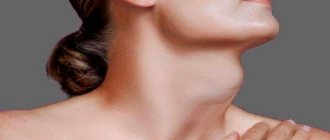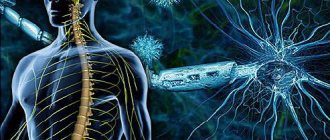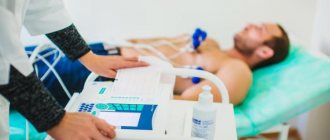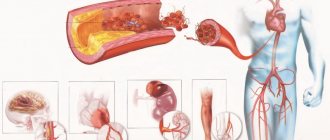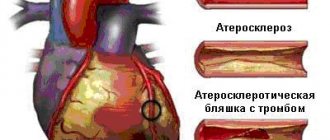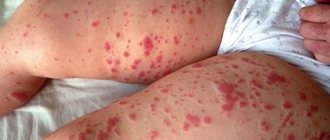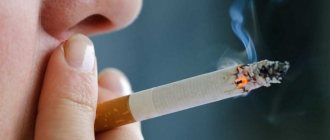Cardiopathy is the collective name for a group of non-inflammatory heart diseases characterized by structural changes in the heart muscle.
Source: static.independent.co.uk
Pathologies of this kind are registered in all age groups, but most often occur in children, adolescents and the elderly.
Causes and risk factors
The mechanism of development of the disease is not fully understood; in some cases, the etiology of cardiopathy cannot be established. The main causes are considered to be genetic factors, viral infections, and autoimmune diseases. In approximately 20% of patients, the disease occurs after infectious myocarditis. Ischemic cardiopathy often develops in patients with a history of myocardial infarction or angina pectoris. Dysplastic cardiopathy develops against the background of rheumatic diseases.
Cardiopathy can be complicated by the development of arrhythmia, angina pectoris, coronary heart disease, arterial hypertension, thrombosis, pulmonary edema, chronic heart failure, and endocarditis.
Risk factors include:
- myocardial abnormalities that arose in the prenatal period of development;
- endocrine diseases;
- multiple atherosclerotic lesions of the intramural and epicardial branches of the coronary arteries;
- neuromuscular diseases;
- bronchial asthma;
- pneumonia;
- frequent acute respiratory diseases;
- arterial hypertension;
- exposure to toxic substances on the body;
- excessive physical activity;
- bad habits;
- poor nutrition.
Prevention
Preventive measures for cardiopathy are:
- Physical stress on the body in moderate amounts . Physical inactivity is not a way out of this situation. Movement improves blood flow and provides the myocardium with oxygen. But excessive loads require more oxygen, and with its deficiency, myocardial hypoxia may develop;
- Diet . It is necessary to exclude fatty and salty foods from the diet in order to prevent atherosclerosis and reduce the index of existing cholesterol;
- Give up bad habits and addictions : nicotine, alcohol and drugs. Tobacco smoking causes a number of pathologies of the heart organ and blood flow system. Alcohol becomes a provocateur of alcoholic urolithiasis, and if you do not stop using it, then this addiction will lead to death;
- Preventive diagnostic studies of the body (ECG, ECHO, and chest x-ray);
- Visit a cardiologist once every 6 months , and also take vitamin complexes to strengthen the heart muscle.
Forms of the disease
There are congenital and acquired, primary and secondary cardiopathy.
Depending on the etiological factor, cardiopathy can be:
- functional – occupies a leading position in the general structure of cardiovascular pathology in children, the prevalence is about 14%;
- ischemic – occurs predominantly in men 45–55 years old (about 90% of all cases), accounting for 5–8% of cases of the total number of clinically pronounced forms of coronary heart disease;
- dishormonal - occurs due to a lack of sex hormones, more often observed in women during menopause, as well as in adolescents;
- dysplastic – occurs in the presence of congenital pathologies of the cardiovascular system, progression of heart failure;
- dysmetabolic – develops against the background of thyroid dysfunction, diabetes mellitus;
- infectious-toxic (including alcohol);
- posthypoxic , or metabolic;
- tonsillogenic - develops against the background of chronic tonsillitis (its causative agent, β-hemolytic streptococcus, with long-term persistence in the body also affects the heart muscle).
In case of secondary cardiopathy, therapy, in addition to correcting cardiac abnormalities, consists of treating the underlying disease that provoked the pathological process.
Features in newborns
In newborns, this pathology is often observed after suffering from hypoxia, and it does not matter whether it is intrauterine or perinatal. It is caused by a violation of the autonomic regulation of cardiac activity and energy exchange processes, which leads to dysfunction in the myocardium.
Similar defects to one degree or another, according to various sources, occur in 40 - 70% of newborns who experienced hypoxia. Moreover, their severity depends on whether the condition continued after birth, and in some cases specific treatment is required. Such cardiopathy persists in about a third of children, usually in the form of minor anomalies, for from a month to 3 years.
Symptoms
Regardless of the form of the disease, the clinical signs of cardiopathy are:
- weakness, fatigue;
- dizziness;
- pale skin, peripheral cyanosis;
- shortness of breath (may be accompanied by attacks of suffocation that occur during excessive physical activity or stressful situations);
- pain and/or discomfort in the chest;
- cough (with the development of pulmonary edema, liquid sputum is released and wheezing is heard);
- swelling of the lower extremities;
- muscle weakness;
- enlargement of the liver and spleen (hepatosplenomegaly).
The congenital form of cardiopathy can debut in the first days of a child’s life, but more often manifests itself at primary school age. It is characterized by the appearance of characteristic heart murmurs, especially during physical activity.
Functional cardiopathy is usually detected in primary school and adolescence. In addition to the main symptoms, there is increased sweating and periodic fainting. Teenagers often complain about the occurrence of extrasystoles (extraordinary contractions of the heart muscle) and increased heart rate.
The clinical picture of dyshormonal cardiopathy in males and females has some differences. Thus, in women, memory loss, neuropsychiatric disorders, sleep disturbances, hot flashes, paresthesia, increased sweating, and frequent urination come to the fore. Men experience disorders of the genitourinary system and pain in the heart area. Signs of damage to the heart muscle are usually not detected.
Possible complications
Cardiopathy affects the electrical conductivity of impulses in the heart. If you do not follow the recommendations of specialists, adverse health consequences are possible:
- arrhythmia, which develops in 10% of cases and requires treatment with drugs or installation of a pacemaker;
- infection of the valves, walls of the heart and blood vessels - endocarditis;
- pericarditis;
- pulmonary edema;
- thrombus formation;
- chronic heart failure (appears in the later stages of cardiopathy);
- sudden death (a rare occurrence in children) (we recommend reading: at what age do infants develop sudden death syndrome?).
Diagnostics
Diagnosing cardiopathy in young children can be difficult, as they are not able to clearly formulate complaints. The pathology is detected during a regular medical examination or when parents detect alarming symptoms (shortness of breath, cyanosis, etc.).
For chronic heart failure, a diet limiting the consumption of table salt is recommended.
To make a diagnosis, a collection of complaints and anamnesis, physical, instrumental and laboratory examinations are carried out.
Among the instrumental diagnostic methods for suspected cardiopathy, the following are used:
- electrocardiography – makes it possible to detect heart rhythm disturbances and track changes in the ventricles and/or atria;
- echocardiography – allows you to assess the degree of impairment of systolic and diastolic function of the ventricles;
- X-ray examination of the lungs - allows you to determine the presence of fluid in the lungs or changes in their size;
- to contrast ventriculography of the heart - allows you to detect expansion of the ventricles of the heart or other changes;
- magnetic resonance imaging , multislice computed tomography - can detect structural changes in the heart;
- myocardial scintigraphy with 99mTc-pyrophosphate - usually used when echocardiography is impossible (poor ultrasound window), the method allows for a quantitative assessment of the systolic and diastolic functions of the left ventricle.
In difficult cases, they resort to endomyocardial biopsy, which makes it possible to assess the degree of destruction of muscle filaments in the biopsy specimen. The study is indicated, first of all, in the presence of cardiac muscle dysfunction and a concomitant systemic disease that affects the myocardium and is amenable to specific treatment (sarcoidosis, etc.).
Laboratory examination includes a general blood and urine test, a biochemical blood test (determining the concentration of total cholesterol, low-density lipoproteins, triglycerides).
Cardiopathy is registered in all age groups, but most often occurs in children, adolescents and the elderly.
Differential diagnosis of cardiopathy is carried out with lesions of the heart valves, aneurysm of the left ventricle of the heart, coronary heart disease, hypertensive disease, chronic recurrent myocarditis.
Cardiopathy of the heart - what is it in children?
Cardiopathy in a child is a primary myocardial disease, damage to the contractile myocardium. In children, idiopathic, hypertrophic cardiomyopathy is more often observed - 5 - 8 cases per 1000 children. There is hypertrophy predominantly of the left ventricle with a decrease in its systolic volume, a deterioration in the relaxation (filling) function, that is, diastole suffers. Systolic function is good. Cardiopathy is often a familial disease associated with HLA antigens, especially DRN4. There have been reports of the discovery of a gene that determines the development of hypertrophic cardiomyopathy, localized on chromosome 6. The disease occurs more often in boys.
In the genesis of cardiopathy, disruption of sympathetic innervation and endocrine factors (increased production of catecholamines) plays a role, which disrupts the normal process of contraction and relaxation of the myocardium (hypertrophy of the interventricular septum, disorganization of muscle fibers, proliferation of fibrous tissue).
Adrenergic stimulation increases the pressure gradient between the left ventricle and the aorta. The level of norepinephrine in the blood is increased.
In cardiopathy, there is uneven distribution of excitation throughout the myocardium of the left ventricle and a violation of the contraction sequence.
Treatment
The choice of treatment regimen for cardiopathy depends on the form of the disease. In case of secondary cardiopathy, therapy, in addition to correcting cardiac abnormalities, consists of treating the underlying disease that provoked the pathological process.
Drug therapy for cardiopathy consists of the use of beta-blockers, angiotensin-converting enzyme inhibitors, antihypoxants, antiplatelet agents, vitamin complexes (B vitamins), and, if necessary, mild sedatives, for example, valerian preparations.
In the case of the development of dysmetabolic cardiopathy, medications are used that normalize metabolic processes in the heart muscle, as well as a diet that normalizes metabolism.
Source: ritmserdca.ru
For dyshormonal cardiopathy, hormonal medications may be required. When blood stagnates in the systemic circulation and/or in the lungs, diuretics are prescribed. In case of severe edema, diuretics are combined with aldosterone antagonists. If the patient has left ventricular heart failure, the main treatment is supplemented with the use of nitrates. Cardiac glycosides are indicated for patients with atrial fibrillation. In the absence of a positive effect from monotherapy with these drugs, they are combined with angiotensin-converting enzyme inhibitors and diuretics (under the control of electrocardiography and the concentration of electrolytes in the patient’s blood).
Physiotherapy is effective in the treatment of functional cardiopathy: laser therapy, hydrogen sulfide baths, bromine or calcium electrophoresis. Children over 10 years of age may be prescribed interference therapy. Spa treatment is recommended.
In approximately 20% of patients, the disease occurs after infectious myocarditis.
Regular exercise therapy is recommended for patients with cardiopathy. In some cases, work with a psychologist or psychotherapist is required. For chronic heart failure, a diet that limits the consumption of table salt is recommended (especially in the presence of edema).
Features in newborns
In newborns, this pathology is often observed after suffering from hypoxia, and it does not matter whether it is intrauterine or perinatal. It is caused by a violation of the autonomic regulation of cardiac activity and energy exchange processes, which leads to dysfunction in the myocardium.
Similar defects to one degree or another, according to various sources, occur in 40 - 70% of newborns who experienced hypoxia. Moreover, their severity depends on whether the condition continued after birth, and in some cases specific treatment is required. Such cardiopathy persists in about a third of children, usually in the form of minor anomalies, for from a month to 3 years.
Preventive measures
Parents need to teach their child to follow preventive measures:
- sleep 7-8 hours;
- walk a lot in the fresh air;
- avoid stress;
- exercise;
- Healthy food.
Any diseases (infectious, chronic, etc.) must be treated in a timely manner, following the doctor’s recommendations. Parents are obliged to monitor the child’s condition and undergo examinations by a pediatrician - this will allow timely detection of pathologies such as cardiopathy.
Source: www.deti34.ru
